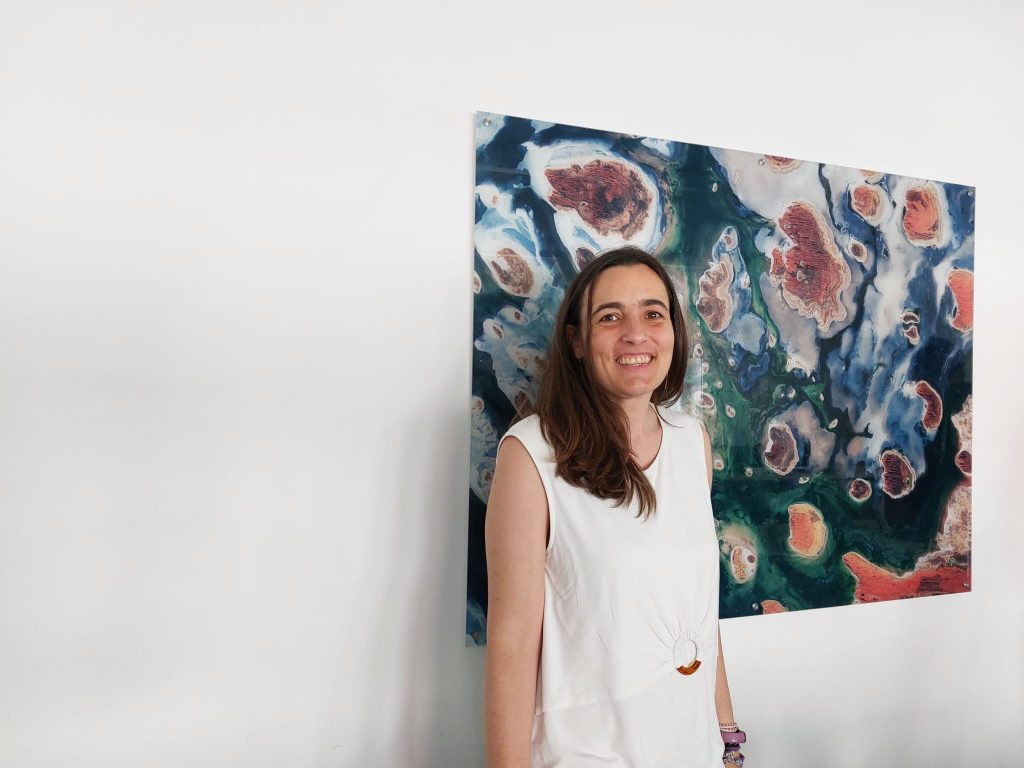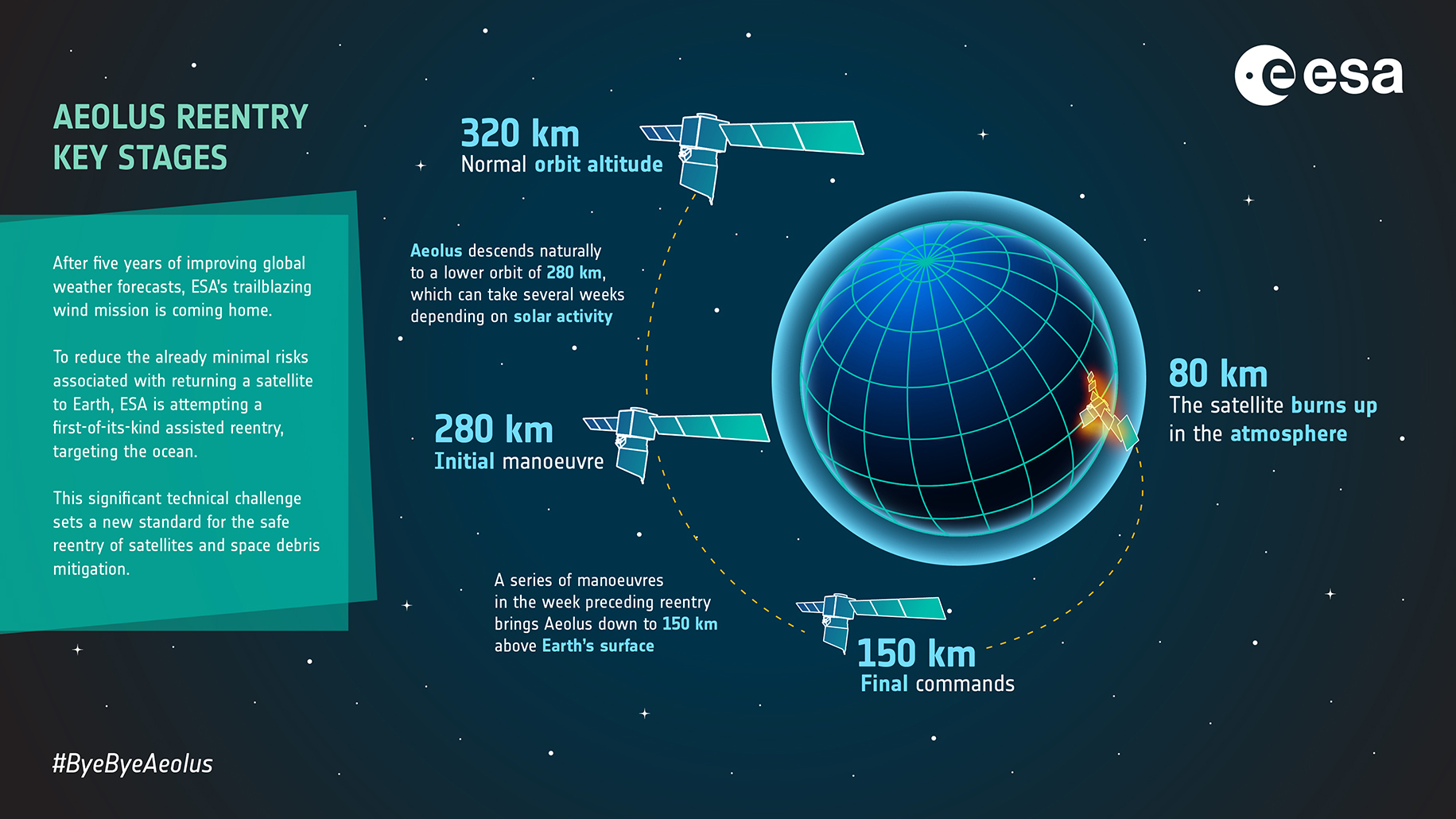Aeolus will return to Earth in a matter of weeks. In its short lifetime of just under five years, the satellite has orbited Earth at 320 km to measure global winds using a laser.
Keeping Aeolus orbiting so close to Earth has been a challenge. The atmosphere at this altitude is constantly nagging at the satellite, with wispy gas dragging it down. Solar weather complicates things, charged particles making the atmosphere soupier.
Then there’s space debris! In 2019, Aeolus had to swerve out of the way of the Starlink constellation of satellites.
It requires constant monitoring.
Introducing Libe Jauregui
As we prepare a pioneering attempt to bring Aeolus home – a first-of-its-kind assisted reentry – we speak to Aeolus Flight Dynamics Manager, Libe Jauregui, about her role in the mission and its trailblazing end.

What is your role in the Aeolus mission?
I am the Aeolus Flight Dynamics Manager and I have been since before launch until now. My team and I are responsible for everything related to the orbit: we try to keep Aeolus where it needs to be.
What’s your favourite part of the role?
Almost everything! I like feeling close to the satellite operations, to contribute to things happening.
I enjoy the team spirit in the Flight Dynamics team, how much they can be trusted to come up with a solution to any problem, and I learn a lot with them.
I also interact frequently with other teams, understand the work they do for Aeolus, their objectives and constraints, and I like getting the bigger picture.
What is the most challenging aspect of the reentry and the mission?
For the routine mission, for us there have been two challenges: to keep up to speed with such a flexible mission and, from the more technical point of view, to be able to operate at a low altitude, where Aeolus is more impacted by the atmosphere.
This meant that it needed frequent manoeuvres. Orbit prediction is very affected by changes in the environment, in particular by solar activity, so we needed constant monitoring of our predictions.
For the reentry, the whole concept is a big challenge.
We need to compute the manoeuvres, take in the information of the ones already executed, and incorporate them into our predictions to then calculate the last one.
All that in a short time and for the first time! But we have been working hard to do everything in our power to contribute to its success.
What’s been your highlight of the Aeolus mission?
The reentry preparation. No matter what finally happens we have learnt a lot and it is a first for us.

How did you get into space? What led you to ESA?
It was a bit by chance. I studied maths and finished university without any background in space, but I heard about trainee opportunities in ESA for mathematicians. I thought it was fascinating and decided to try.
I got in, thinking of staying for a year, but 18 years later I am still here and still fascinated.
When you’re not working on Aeolus, what do you like to do?
Travel, read, bake, go for a walk, spend time with my kids, have a coffee/dinner with friends, play boardgames…
Describe the Aeolus mission using only one word.
Challenging.
What the most interesting aspect of flying Aeolus?
For us the altitude has been what made it interesting.
What’s the most interesting Aeolus manoeuvre?
I hope the last one for the reentry.

Discussion: no comments